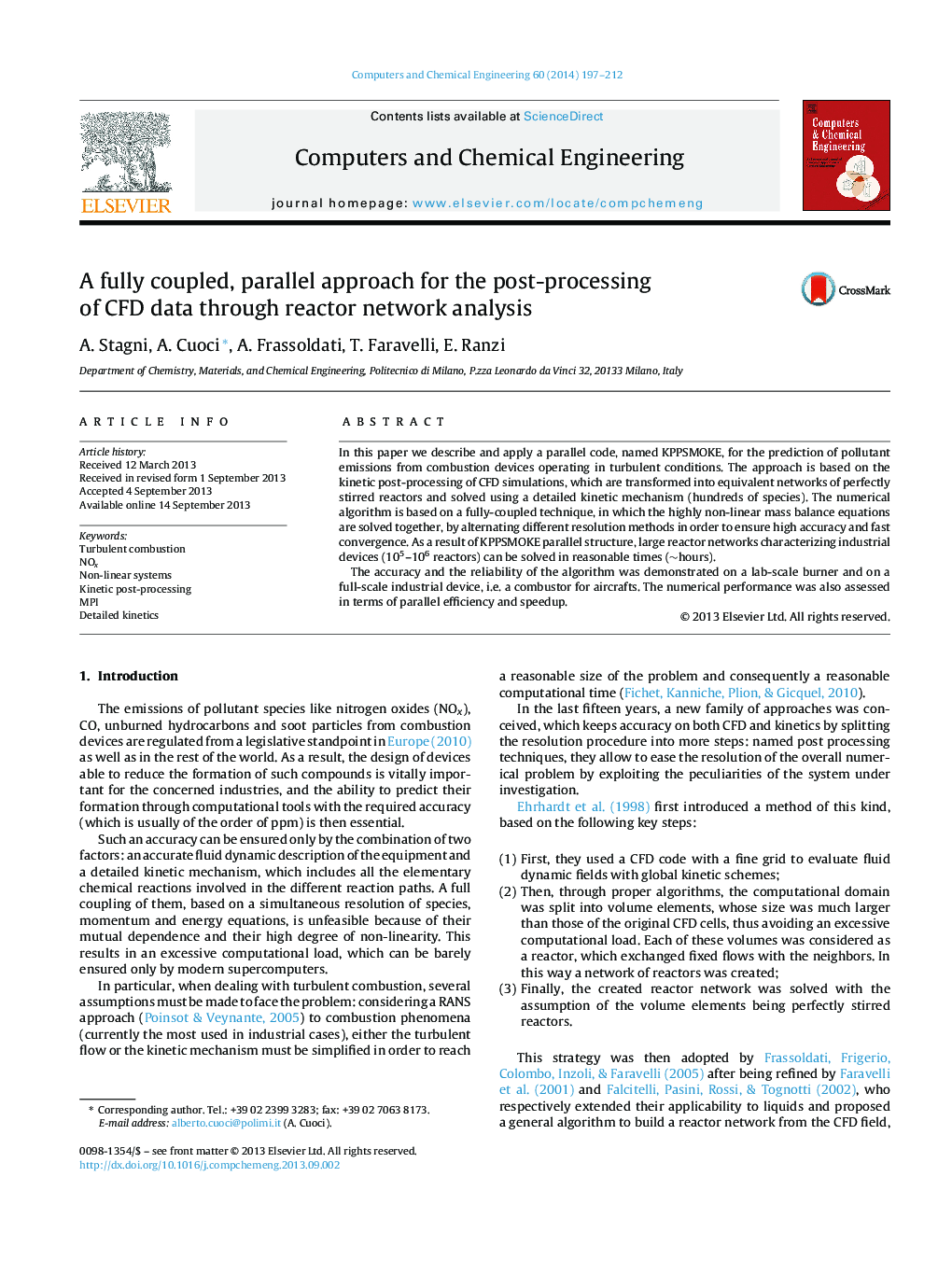| Article ID | Journal | Published Year | Pages | File Type |
|---|---|---|---|---|
| 172435 | Computers & Chemical Engineering | 2014 | 16 Pages |
•A strategy to predict pollutants’ formation in turbulent combustion is proposed.•The transport equations of species are solved using a fully-coupled approach.•Accurate prediction of pollutants’ emissions through detailed kinetic schemes.•Industrial equipment can be simulated thanks to parallel data distribution.
In this paper we describe and apply a parallel code, named KPPSMOKE, for the prediction of pollutant emissions from combustion devices operating in turbulent conditions. The approach is based on the kinetic post-processing of CFD simulations, which are transformed into equivalent networks of perfectly stirred reactors and solved using a detailed kinetic mechanism (hundreds of species). The numerical algorithm is based on a fully-coupled technique, in which the highly non-linear mass balance equations are solved together, by alternating different resolution methods in order to ensure high accuracy and fast convergence. As a result of KPPSMOKE parallel structure, large reactor networks characterizing industrial devices (105–106 reactors) can be solved in reasonable times (∼hours).The accuracy and the reliability of the algorithm was demonstrated on a lab-scale burner and on a full-scale industrial device, i.e. a combustor for aircrafts. The numerical performance was also assessed in terms of parallel efficiency and speedup.
